Venture into the vibrant world of animals starting with the letter V, where our exploration has uncovered 20+ fascinating creatures! Join us as we uncover interesting facts and celebrate the uniqueness that these 20+ animals bring to the colorful tapestry of our natural world.
You can jump to related info about animals that start with the letter ‘U’.
From the vampire bat, a nocturnal mammal with a taste for blood, to the majestic vulture, a scavenger with a keen sense of smell, the V-kingdom boasts a fascinating array of adaptations and behaviors. We’ll encounter the playful vervet monkey, renowned for its complex social interactions, and the elegant vicuña, a high-altitude dweller prized for its luxurious fleece.
Prepare to be surprised by the vine snake, a master of camouflage that blends seamlessly into its surroundings, and the intriguing viperfish, a deep-sea predator with bioluminescent lures to attract prey.
This exploration is just a glimpse into the remarkable world of V-named animals. So, get ready to be amazed as we delve deeper into their captivating stories, remarkable adaptations, and the essential roles they play in maintaining our planet’s ecological balance.
List Of Animals That Start with V
- Vulture
- Vampire bat
- Vervet monkey
- Vicuña
- Vietnamese pot-bellied pig
- Viper (snake)
- Vizsla (dog breed)
- Vaquita (porpoise)
- Velvet worm
- Venus flytrap (although it’s a plant, it catches and consumes insects)
- Vesper bat
- Vicuña
- Vine snake
- Violet-backed starling
- Virginia opossum
- Visayan warty pig
- Vulture bee
- Vulcan tree cricket
- Vandal spider
- Variable oystercatcher
- Velvet ant (actually a type of wasp)
- Velvet gecko
- Velvet spider
- Verreaux’s sifaka (a type of lemur)
- Vervain hummingbird
Valley Bulldog

| Scientific Name | Canis lupus familiaris |
| Special Habit | Energetic and friendly domestic dog breed |
| Place of Origin | Canada |
| Size | Medium-sized, around 43 to 61 cm at the shoulder |
| Commonly Found In | Domestic settings as a companion dog |
| Lifespan | Around 10 to 14 years |
| Diet | Omnivorous, typical dog diet |
| Reproduction | Viviparous, giving birth to puppies |
| Conservation Status | Not Applicable |
The Valley Bulldog is known for its gentle and affectionate nature, making it an excellent choice as a family pet.
Vampire Bat
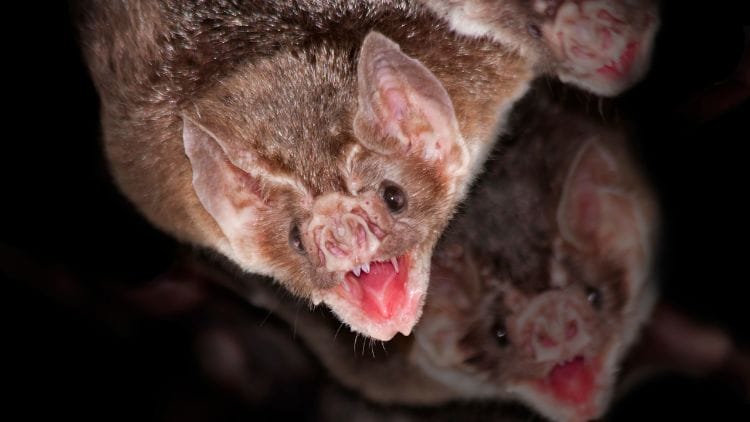
| Scientific Name | Desmodus rotundus |
| Special Habit | Nocturnal bat known for feeding on blood |
| Place of Origin | Americas, ranging from Mexico to Brazil |
| Size | Small to medium-sized, wingspan around 18 to 23 cm |
| Commonly Found In | Caves, forests, and other roosting sites |
| Lifespan | Up to 9 years in the wild |
| Diet | Hematophagous, feeding on blood from mammals |
| Reproduction | Viviparous, giving birth to one offspring |
| Conservation Status | Least Concern |
Vampire bats have specialized heat sensors on their nose to detect blood vessels in their prey, aiding in precise feeding.
Vampire Crab

| Scientific Name | Geosesarma species |
| Special Habit | Terrestrial crab with vibrant colors |
| Place of Origin | Indonesia |
| Size | Small, carapace width around 2 to 4 cm |
| Commonly Found In | Tropical forests, near freshwater sources |
| Lifespan | Around 2 to 3 years in captivity |
| Diet | Omnivorous, consuming plants and small invertebrates |
| Reproduction | Oviparous, laying eggs in burrows |
| Conservation Status | Not Assessed |
Vampire crabs get their name from their striking colors and unique behaviors, resembling the mysterious and mythical nature of vampires.
Vampire Squid
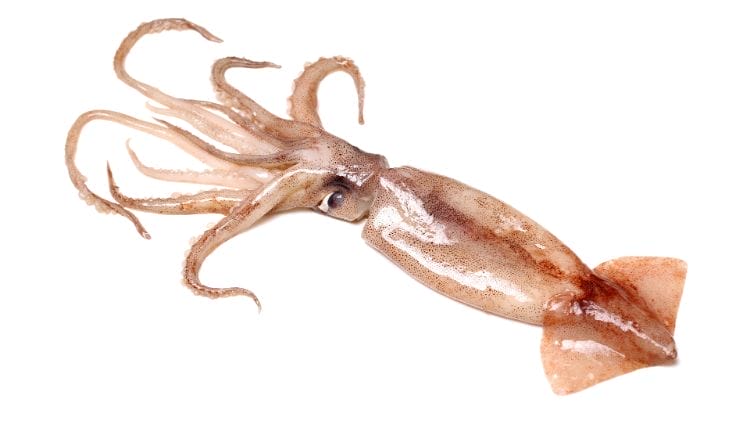
| Scientific Name | Vampyroteuthis infernalis |
| Special Habit | Deep-sea cephalopod with bioluminescent features |
| Place of Origin | Deep oceans, worldwide distribution |
| Size | Small, mantle length around 15 cm |
| Commonly Found In | Ocean depths between 600 to 900 meters |
| Lifespan | Up to 3 years |
| Diet | Carnivorous, feeding on marine particles and small organisms |
| Reproduction | Oviparous, laying gelatinous egg masses |
| Conservation Status | Data Deficient |
Despite its name, the vampire squid does not feed on blood; it earned its name due to its dark coloration and cloak-like webbing between its tentacles.
Vaquita
| Scientific Name | Phocoena sinus |
| Special Habit | Critically endangered porpoise species |
| Place of Origin | Gulf of California, Mexico |
| Size | Small, around 1.2 to 1.5 meters in length |
| Commonly Found In | Coastal waters of the Gulf of California |
| Lifespan | Around 20 years |
| Diet | Carnivorous, feeding on fish and squid |
| Reproduction | Viviparous, giving birth to a single calf every 2 years |
| Conservation Status | Critically Endangered |
The vaquita is one of the rarest marine mammals, with only a few individuals remaining, primarily due to bycatch in illegal gillnets.
Veery
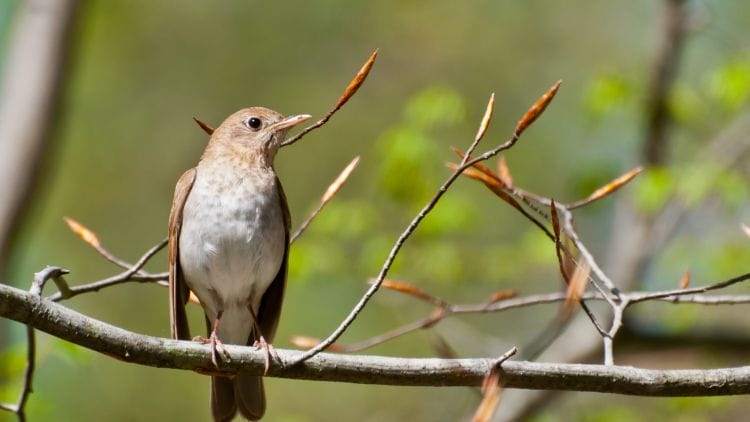
| Scientific Name | Catharus fuscescens |
| Special Habit | Songbird known for its melodious and flute-like song |
| Place of Origin | North America, breeding in forests |
| Size | Small, around 15 to 18 cm in length |
| Commonly Found In | Wooded areas and forests |
| Lifespan | Up to 10 years |
| Diet | Insectivorous, feeding on insects and spiders |
| Reproduction | Oviparous, laying a clutch of eggs |
| Conservation Status | Least Concern |
The veery’s song is often described as ethereal and magical, contributing to its nickname “The Fairy of the Forest.”
Vegavis
| Scientific Name | Vegavis iaai |
| Special Habit | Extinct bird from the Late Cretaceous period |
| Place of Origin | Antarctica |
| Size | Moderate size, similar to modern ducks |
| Commonly Found In | Fossil remains discovered in Antarctica |
| Lifespan | Extinct species |
| Diet | Presumed to be omnivorous |
| Reproduction | Presumed to lay eggs |
| Conservation Status | Extinct |
Vegavis is significant as one of the few bird fossils found in Antarctica, providing insights into the continent’s prehistoric biodiversity.
Velociraptor
| Scientific Name | Velociraptor mongoliensis |
| Special Habit | Extinct theropod dinosaur known for speed |
| Place of Origin | Mongolia, China |
| Size | Small to medium-sized, around 2 meters in length |
| Commonly Found In | Fossil remains found in Central Asia |
| Lifespan | Extinct species |
| Diet | Carnivorous, likely preyed on small dinosaurs |
| Reproduction | Presumed to lay eggs |
| Conservation Status | Extinct |
Contrary to its portrayal in some movies, Velociraptors likely had feathers, providing insulation rather than the scaly appearance often shown.
Venus Flytrap

| Scientific Name | Dionaea muscipula |
| Special Habit | Carnivorous plant with unique trapping mechanism |
| Place of Origin | Native to the southeastern United States |
| Size | Small, trap diameter typically 5-6 cm |
| Commonly Found In | Sandy and wetland areas of the Southeast U.S. |
| Lifespan | Perennial, can live for several years |
| Diet | Insectivorous, capturing and digesting insects |
| Reproduction | Produces small white flowers, seed propagation |
| Conservation Status | Not Evaluated |
The Venus Flytrap’s rapid closing of its trap is triggered by sensitive trigger hairs, ensuring it captures only live prey and conserves energy.
Vermilion Flycatcher
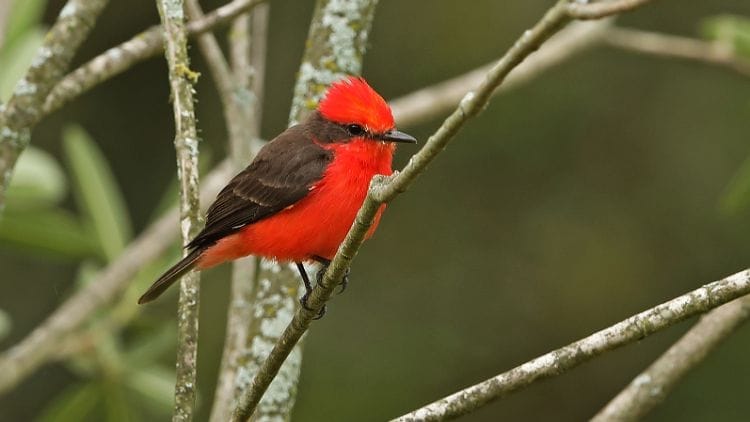
| Scientific Name | Pyrocephalus obscurus |
| Special Habit | Vibrant red-colored bird with aerial hunting skills |
| Place of Origin | The Americas, from the U.S. to South America |
| Size | Small, around 16 cm in length |
| Commonly Found In | Open areas with perches for hunting |
| Lifespan | Around 5 years in the wild |
| Diet | Insectivorous, catching insects in flight |
| Reproduction | Builds cup-shaped nests, lays eggs |
| Conservation Status | Least Concern |
Male Vermilion Flycatchers are known for their stunning red plumage, attracting mates with their vibrant color during courtship displays.
Vervet Monkey
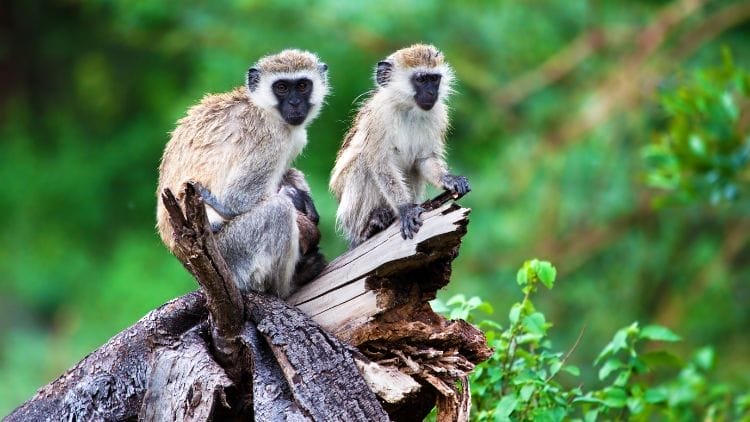
| Scientific Name | Chlorocebus pygerythrus |
| Special Habit | Medium-sized Old World monkey with distinct coloration |
| Place of Origin | Sub-Saharan Africa |
| Size | Small to medium-sized, males larger than females |
| Commonly Found In | Savannah and woodland habitats |
| Lifespan | Around 12 to 24 years in captivity |
| Diet | Omnivorous, feeding on fruits, leaves, insects |
| Reproduction | Viviparous, giving birth to live young |
| Conservation Status | Least Concern |
Vervet monkeys are known for their expressive faces and vocalizations, using distinct calls to communicate different types of threats from predators.
Vestal Cuckoo Bumblebee

| Scientific Name | Bombus vestalis |
| Special Habit | Parasitic bumblebee species |
| Place of Origin | Europe and Asia |
| Size | Moderate size, similar to other bumblebees |
| Commonly Found In | Varied habitats, often near host bumblebee nests |
| Lifespan | Annual lifecycle |
| Diet | Feeds on nectar |
| Reproduction | Parasitizes the nests of other bumblebee species |
| Conservation Status | Not Evaluated |
Vestal Cuckoo Bumblebees lack the pollen baskets found in worker bees, as they rely on parasitizing other bumblebee nests for food and reproduction.
Vicuña

| Scientific Name | Vicugna vicugna |
| Special Habit | Wild relative of the llama, known for fine wool |
| Place of Origin | South America, particularly the Andes |
| Size | Small to medium-sized, shoulder height around 90 cm |
| Commonly Found In | High-altitude grasslands of the Andes |
| Lifespan | Around 15-20 years |
| Diet | Herbivorous, grazing on grasses and plants |
| Reproduction | Viviparous, gives birth to a single cria |
| Conservation Status | Least Concern |
Vicuñas are known for their incredibly soft and valuable wool, which is highly sought after for luxury textiles.
Vine Snake
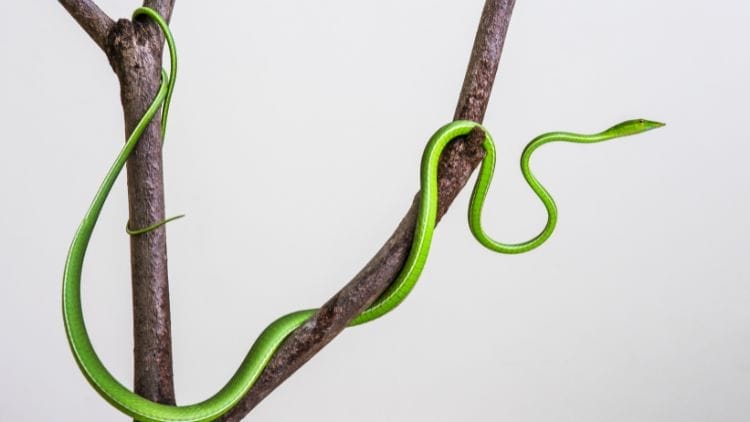
| Scientific Name | Oxybelis |
| Special Habit | Arboreal snake with slender body |
| Place of Origin | Southern Mexico to Argentina |
| Size | Moderate size, length varies by species |
| Commonly Found In | Forested and wooded areas, often near water |
| Lifespan | Varies by species, typically several years |
| Diet | Carnivorous, preying on small vertebrates |
| Reproduction | Oviparous, lays eggs in secluded locations |
| Conservation Status | Not Evaluated |
Vine Snakes are excellent climbers, using their slender bodies to move easily through branches and foliage.
Vinegaroon
| Scientific Name | Mastigoproctus giganteus |
| Special Habit | Arachnid resembling a scorpion but lacks a tail stinger |
| Place of Origin | North and Central America |
| Size | Moderate size, around 6 cm to 8 cm in length |
| Commonly Found In | Desert and scrubland habitats |
| Lifespan | Several years |
| Diet | Insectivorous, preying on insects and other arachnids |
| Reproduction | Oviparous, lays eggs in soil |
| Conservation Status | Not Evaluated |
Vinegaroons can emit a vinegar-smelling liquid as a defense mechanism, deterring potential predators.
Viper
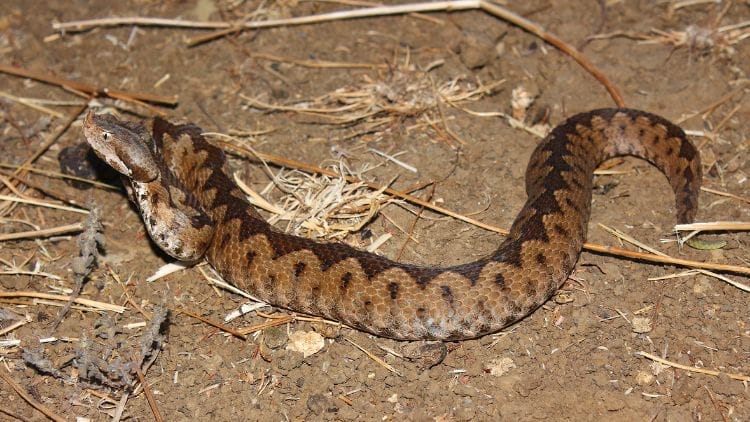
| Scientific Name | Viperidae (family) |
| Special Habit | Venomous snakes with retractable fangs |
| Place of Origin | Worldwide, except Antarctica, Australia, and some islands |
| Size | Varies widely by species, from small to large |
| Commonly Found In | Diverse habitats, including grasslands and forests |
| Lifespan | Varies by species, some can live over 20 years |
| Diet | Carnivorous, feeding on small mammals and birds |
| Reproduction | Viviparous or ovoviviparous, giving birth to live young |
| Conservation Status | Varies by species, some are Least Concern, while others are Threatened |
Vipers are known for their heat-sensing pits on their heads, allowing them to detect warm-blooded prey in the dark.
Viper Boa
| Scientific Name | Candoia aspera |
| Special Habit | Non-venomous boa with a distinctive triangular head |
| Place of Origin | Solomon Islands in the Pacific |
| Size | Moderate size, around 4-5 feet in length |
| Commonly Found In | Tropical rainforests and coastal areas |
| Lifespan | Around 15-20 years in captivity |
| Diet | Carnivorous, preying on small mammals and birds |
| Reproduction | Oviparous, lays eggs in secluded locations |
| Conservation Status | Not Evaluated |
Viper Boas are known for their calm demeanor and are popular as pets in the reptile-keeping community.
Viper Shark (dogfish)
| Scientific Name | Various species within Squalidae family |
| Special Habit | Small to medium-sized sharks with spines on dorsal fins |
| Place of Origin | Oceans worldwide, mostly in deep waters |
| Size | Varies by species, generally 1-4 feet in length |
| Commonly Found In | Deep-sea environments, continental slopes |
| Lifespan | Varies by species, typically several decades |
| Diet | Carnivorous, feeding on fish and invertebrates |
| Reproduction | Oviparous, laying eggs in protected areas |
| Conservation Status | Varies by species, some are Least Concern, while others are Near Threatened |
Viper Sharks get their name from the venomous spines on their dorsal fins, though the venom is not harmful to humans.
Viperfish
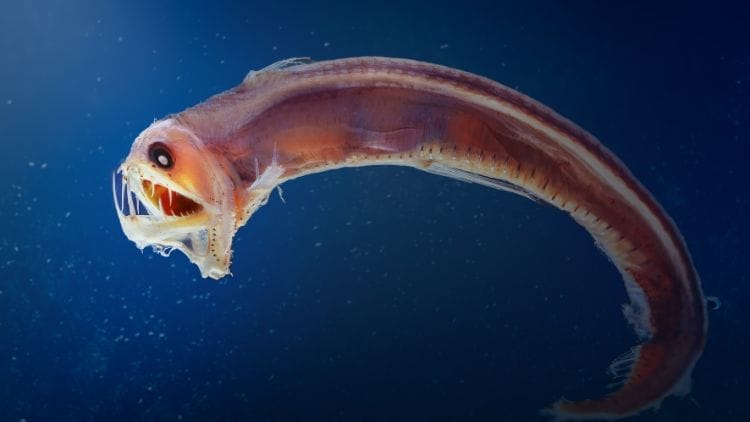
| Scientific Name | Chauliodus |
| Special Habit | Deep-sea fish with bioluminescent lure |
| Place of Origin | Oceans worldwide, in deep, dark waters |
| Size | Small to medium-sized, typically 6-12 inches |
| Commonly Found In | Deep-sea environments, below 1,000 meters |
| Lifespan | Several years |
| Diet | Carnivorous, preying on smaller fish and squid |
| Reproduction | Oviparous, releasing eggs into the water |
| Conservation Status | Not Evaluated |
The Viperfish uses its bioluminescent lure to attract prey in the pitch-black depths of the ocean.
Virgin Islands Dwarf Gecko
| Scientific Name | Sphaerodactylus parthenopion |
| Special Habit | Small-sized, nocturnal gecko |
| Place of Origin | Virgin Islands in the Caribbean |
| Size | Very small, around 2 inches in length |
| Commonly Found In | Forested areas and urban environments |
| Lifespan | Several years |
| Diet | Insectivorous, feeding on small insects |
| Reproduction | Oviparous, laying eggs in concealed locations |
| Conservation Status | Not Evaluated |
Virgin Islands Dwarf Geckos are expert climbers and can be found on trees, rocks, and buildings.
Vizsla

| Scientific Name | Canis lupus familiaris |
| Special Habit | Energetic and versatile hunting dog |
| Place of Origin | Hungary |
| Size | Medium-sized, around 21-24 inches at the shoulder |
| Commonly Found In | Homes as a companion and in hunting fields |
| Lifespan | 10-14 years |
| Diet | Omnivorous, balanced diet of dog food |
| Reproduction | Viviparous, giving birth to a litter of puppies |
| Conservation Status | Not Applicable |
Vizslas are known for their affectionate nature and are sometimes referred to as “Velcro dogs” for sticking close to their owners.
Volcano Snail
| Scientific Name | Opisthostoma vermiculum |
| Special Habit | Terrestrial snail found near volcanic areas |
| Place of Origin | Sumatra, Indonesia |
| Size | Small, shell diameter around 1 cm |
| Commonly Found In | Volcanic slopes and rainforest floors |
| Lifespan | Several years |
| Diet | Herbivorous, feeding on decaying plant matter |
| Reproduction | Hermaphroditic, exchanging sperm during mating |
| Conservation Status | Not Evaluated |
The Volcano Snail’s unique habitat near volcanic areas adds an interesting aspect to its ecology.
Vole
| Scientific Name | Microtus |
| Special Habit | Small rodent resembling a mouse |
| Place of Origin | Various species found worldwide |
| Size | Small to medium-sized, around 3-9 inches |
| Commonly Found In | Grasslands, meadows, and forests |
| Lifespan | Typically less than a year in the wild |
| Diet | Herbivorous, consuming grasses and plants |
| Reproduction | Oviparous, giving birth to litters of pups |
| Conservation Status | Varies by species, some are Least Concern, while others are Near Threatened |
Voles are prolific breeders, and some species can have multiple litters in a single year.
Volpino Italiano
| Scientific Name | Canis lupus familiaris |
| Special Habit | Small, fluffy companion dog |
| Place of Origin | Italy |
| Size | Small, around 9-12 inches at the shoulder |
| Commonly Found In | Homes as a companion |
| Lifespan | 12-16 years |
| Diet | Omnivorous, balanced diet of dog food |
| Reproduction | Viviparous, giving birth to a small number of puppies |
| Conservation Status | Not Applicable |
The Volpino Italiano is known for its lively and friendly demeanor, making it a delightful family pet.
Vulture
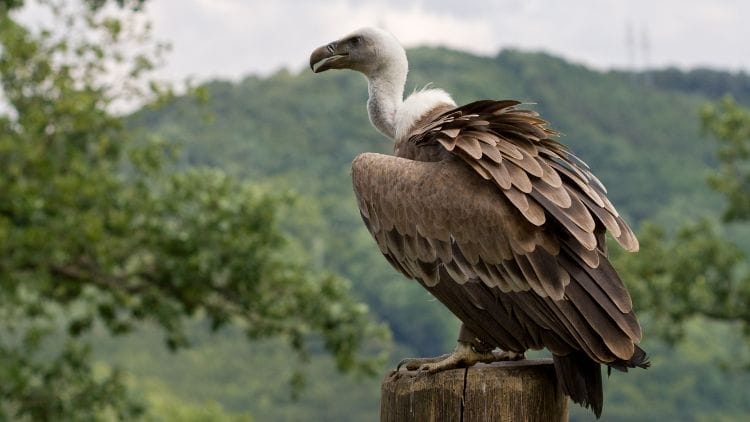
| Scientific Name | Various species within Accipitridae family |
| Special Habit | Scavenging bird of prey with bald head |
| Place of Origin | Worldwide, in various habitats |
| Size | Varies by species, medium to large |
| Commonly Found In | Open areas, deserts, and forests |
| Lifespan | Varies by species, typically several decades |
| Diet | Scavengers, feeding on carrion |
| Reproduction | Viviparous, laying one or two eggs |
| Conservation Status | Varies by species, some are Least Concern, while others are Near Threatened |
Vultures play a crucial role in ecosystems by helping to clean up and recycle animal carcasses.
To Wrap Up
And there you have it – a delightful journey through the lives of 20+ animals that start with V! Each one, though in modest numbers, contributes to the richness of our planet. Keep your sense of wonder alive, and let’s continue to cherish and protect the homes of these wonderful creatures.


You May Also Read